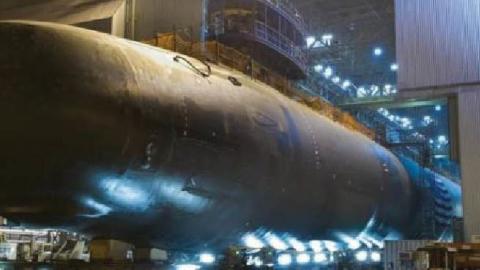After a year punctuated by mishaps, readiness shortfalls, and a lack of future vision, U.S. Navy leaders are hoping a flurry of activity during the Trump administration’s waning days will move the service in a more positive direction. In the last few weeks the Pentagon released a long-delayed force structure requirement and shipbuilding plan; Navy, Marine, and Coast Guard chiefs published a new Tri-Service Maritime Strategy; and Congress bumped up ship construction and other Navy procurement by $4 billion in the fiscal year 2021 appropriations bill.
The renewed energy behind maritime superiority is a welcome change. For nearly a decade, national security experts argued the Navy and Air Force should get more attention and funding in light of the United States' intensifying competition with the People’s Republic of China. Unfortunately, while the new maritime strategy lays out a promising approach to countering the PRC, the DoD and Congress have failed to adjust their budgets and shipbuilding plans to develop a fleet that can put the strategy into action.
Design for competition
The tri-service strategy is being rightfully praised for its focus on maintaining a rules-based order at sea in the face of threats posed by the PRC. But a maritime strategy crafted by service chiefs in Washington is unlikely to change how Combatant Commanders use ships, Marines, or Coast Guardsmen; rather, it is intended to guide the services’ force development efforts. As the Marine Corps did last year following Commandant Berger’s new planning guidance, the Navy should adopt force structure changes that implement the maritime strategy’s primary tenets.
Today’s fleet design reflects an expectation, expressed in the 2018 National Defense Strategy and Navy’s 2019 Design for Maritime Superiority, that a U.S. force able to defeat the People’s Liberation Army in important major combat operations will thereby also deter PRC aggression. Among the many flaws of that approach are that it assumes PRC leaders view large-scale, high-intensity war as the primary mechanism for achieving their objectives and that our analysis can accurately estimate the characteristics of such a conflict. As evidenced by their hybrid operations in the South and East China Seas and global investment and engagement, PRC leaders are clearly pursuing more complex and less-escalatory paths to their goals.
The tri-service strategy recognizes China’s evolving approach and commits Navy leaders to pursue a fleet that can sustainably and effectively compete with the PRC’s maritime forces and present a sufficient challenge in war that the resulting uncertainty deters PRC escalation. However, neither today’s fleet nor the force described in the Navy’s shipbuilding plan support these objectives.
The Navy’s new fleet architecture begins to provide greater capacity and a wider range of options for competing against the PRC but falls short by not making hard choices that would allow the new fleet design to be sustainable over a long-term competition. During several years the Navy’s shipbuilding plan assumes more than 50 percent growth in construction funding to continue building aircraft carriers at the current rate, increase submarine production, and create a new large surface combatant while simultaneously developing and fielding new smaller platforms like the light amphibious warship, next-generation logistics ship, guided-missile frigate, and multiple classes of unmanned vessel. Perhaps most egregiously, by failing to rebalance away from large, manpower-intensive platforms and toward smaller, less-expensive ones Navy leaders assume future defense budgets will cover doubling the fleet’s operations and support costs.
The unsustainability of the Navy’s plans will prevent it from implementing the new maritime strategy. When future budgets cannot match the fleet’s rapidly-rising costs, Navy leaders are more likely to cut production of new smaller platforms compared to large surface combatants, submarines, and aircraft carriers that have accrued sizable sunk costs, industrial bases, and constituencies. As a result, the fleet will likely retain its current weighting toward a relatively small number of large, multimission vessels that lack the proportionality and capacity to enable effective competition.
Decision-making over firepower
A less-noticed aspect of the tri-service strategy is how it begins to change the naval services’ approach to warfighting. Consistent with its emphasis on competition, the strategy devotes most of its attention to how naval forces will counter and undermine adversary efforts to gain territory and influence in situations short of large-scale combat. And when competition turns to conflict, it lays the groundwork for a new theory of victory that emphasizes decision-making and maneuver over simple lethality.
Naval forces would use dispersal, kinetic defenses, electromagnetic warfare, and mobility to survive while delivering integrated effects from multiple domains to deny the enemy its objectives. Smaller and lower-signature units inside highly contested areas would be complemented by larger strike forces operating from more permissive environments. And artificial intelligence-enabled sensors and decision aids would gain situational awareness and support decision-making among diverse naval forces.
An implication of the strategy’s approach is that, as in maneuver warfare, naval forces will seek to present an opponent with multiple, mutually-insoluble dilemmas that will prevent it from being successful. It is arguably a defensive strategy, appropriate to a status-quo power like the United States. Here again, however, the Congress and Navy have failed to put actions behind words by not rebalancing the fleet and assuming more realistic fiscal constraints. Future fleet commanders will therefore be unable to create the complexity and uncertainty needed to survive and defeat aggression.
The Navy’s large, multimission ships are well-suited for efficiently keeping the peace in the relatively uncontested environments of the 1990s and 2000s when they were born. Today’s world of aggressive maritime competition, gray-zone and hybrid warfare, and highly contested operational environments requires a different fleet design. The maritime services should be applauded for recognizing the change and identifying elements of a new approach. The Biden administration will need to ensure it is implemented.
Read in Forbes



















